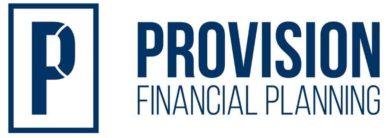5 IRA Strategies and Mistakes You Need to Know
IRAs, or individual retirement accounts, are tax-deferred investment accounts. You can either fund them directly, assuming you otherwise qualify, or use them to rollover 401k/403b funds. For this reason, these accounts have become a cornerstone of retirement planning and there is enough complexity to create plenty of room for errors, which can be costly.
For the purposes of this article, IRAs will refer to traditional IRAs and Roth IRAs will be noted as such.
Like all things involving taxes, be sure to consult a qualified advisor on how these may apply to your own specific situation. As I like to say, tax rules even have exceptions to the exceptions.
Qualified Charitable Distributions
QCDs are an incredible benefit for people at least 70.5 years of age. A QCD allows you to donate money directly to a qualifying charity from your IRA. If you do this, then the distribution is excluded from your income, which can even be better than a deduction on your tax return. This distribution can be counted towards your Required Minimum Distribution, but must be coordinated with any IRA contributions made after 70.5. And yes, you actually have to be 70.5 to do this, not just in the calendar year you turn 70.5.
60-Day Rollovers
A 60-day rollover allows you to roll IRA funds back into an IRA after a distribution within 60 days. Additionally, only one 60-day rollover can happen within a 12 month period. Please note it is not calendar year based, but an actual 12 month period.
A 60-day rollover is in contrast to a “direct transfer” or “trustee-to-trustee” transfer. This type of transfer can happen as many times as you would like and is done by distributing money from an IRA or 401k directly to another IRA. This method mitigates some of the risk associated with a 60-day rollover.
Not Filing Form 8606 for Non-Deductible Contributions
You can make non-deductible contributions to an IRA. This generally happens if you earn too much income to make a deductible contribution. This can also be a part of a strategy broadly known as a “backdoor-Roth IRA”. In either scenario, a non-deductible contribution creates “basis” in your IRA.
This is important because one day the funds will be taken out. When that happens, you will owe tax on it again unless you properly tracked your basis, which is done by filing form 8606. Your tax owed will now be calculated according to the “pro-rata rule”, which will be lower than if you had not properly tracked your basis. This applies to withdrawals and conversions.
Inheriting IRAs
The SECURE Act of 2019 created new distribution rules for beneficiaries of IRAs. While you should be aware of the new rules, this article will focus on spousal beneficiaries. When a spouse inherits an IRA from their deceased spouse, they have options.
They can treat the IRA as their own. This usually makes sense if you are over 59.5 or you are younger than your deceased spouse.
Spousal beneficiaries can also treat it as an inherited account, which would allow them to access the funds without a 10% penalty before 59.5. This can also make sense if you are older than your spouse, because the required minimum distributions will be lower with this option.
There are other complexities as well, but the takeaway is that a spousal beneficiary has an important decision to make with regards to inheriting a retirement account and should consult a qualified advisor to see which makes the most sense to them given their unique situation.
You should also not ever feel pressured to act quickly. While I agree some things must be done timely after a spouse dies, making decisions on account types and how it should be invested is not one of them. This is how some people end up being sold bad products they can’t get out of without stiff penalties.
Still Working at Age 72
IRA owners must start Required Minimum Distributions at age 72 (this used to be 70.5). However, people are working past this age more and more either out of choice or by necessity. Funds in your current 401k are not required to be distributed at 72 if you are still working (provided your are not considered a 5% owner). You can avoid IRA RMDs by transferring IRA balances to your current 401k if you are still working as long as your plan allows.
Hopefully knowing at least one of these strategies will benefit you in some way. If nothing else, it may have shown you that there are things you haven’t thought about yet or may not know. Please carefully consider seeking advice from a qualified advisor before making decisions regarding your retirement accounts.
Download 9 Mistakes to Avoid When Retiring Solo for more retirement guidance.
